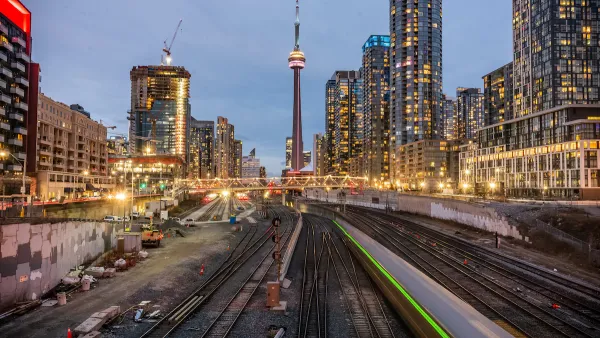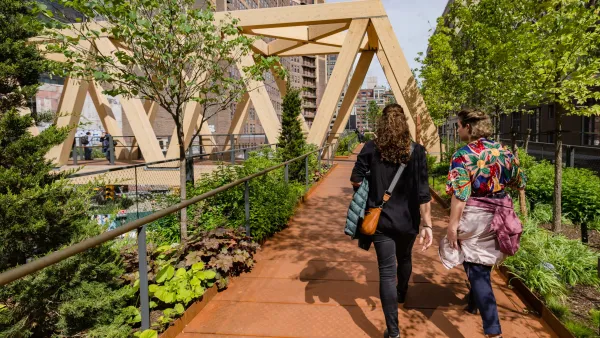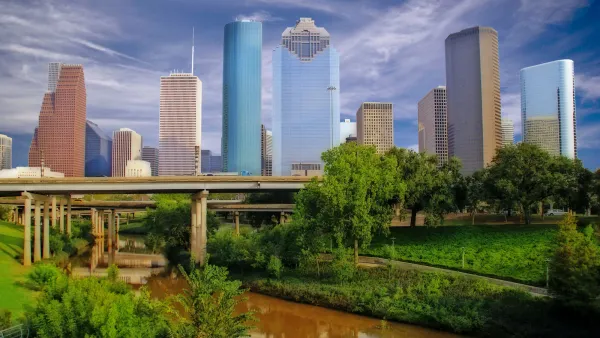Metropolis Magazine examines the 21st century efforts at creating wild places in cities, exemplified by the Buffalo Bayou Promenade in Houston and the Passaic River in Newark.
Writer Karrie Jacobs starts the article by contrasting today’s efforts at creating wild or natural environments in cities with the escapist goals of Olmsted’s Central Park. “What’s happening today is different. Twenty-first century metropolitan nature is about embracing the city, not fleeing it,” says Jacobs. (To be fair to Olmsted's perspective, recent research suggests that a more immersive park experience is necessary to overcome the "cognitive strains" of urban life.)
Jacobs quotes a luminary no less than Robert Hammond, “one of the activists who conjured the High Line into being,” to further that point: “Central Park was meant to be an escape…On the High Line, you’re in nature, but you can hear the traffic; you can see the Empire State Building.”
Jacobs admits that she’s most ”most fascinated by the taming of harsh neighborhood cleavings created by overhead roadways and rail lines,” and identifies the orientation of the High Line, rather than its form or even structures, as the idea most worth emulating in other cities:
“Every city doesn’t need an elevated linear park, nor should every old railroad viaduct be converted for recreational use. But there are features of our cities that we commonly regard as eyesores that should instead be valued as part of our unnatural natural environment. We can find ways to immerse ourselves in these oddities as if they were the uncanny rock formations of some southwestern canyon. Even the most obstructive, no-man’s-land-generating form of urban infrastructure—the elevated expressway—can, with skill and imagination, be incorporated into metropolitan nature.”
FULL STORY: Unnatural Nature

Analysis: Cybertruck Fatality Rate Far Exceeds That of Ford Pinto
The Tesla Cybertruck was recalled seven times last year.

National Parks Layoffs Will Cause Communities to Lose Billions
Thousands of essential park workers were laid off this week, just before the busy spring break season.

Retro-silient?: America’s First “Eco-burb,” The Woodlands Turns 50
A master-planned community north of Houston offers lessons on green infrastructure and resilient design, but falls short of its founder’s lofty affordability and walkability goals.

Test News Post 1
This is a summary

Analysis: Cybertruck Fatality Rate Far Exceeds That of Ford Pinto
The Tesla Cybertruck was recalled seven times last year.

Test News Headline 46
Test for the image on the front page.
Urban Design for Planners 1: Software Tools
This six-course series explores essential urban design concepts using open source software and equips planners with the tools they need to participate fully in the urban design process.
Planning for Universal Design
Learn the tools for implementing Universal Design in planning regulations.
EMC Planning Group, Inc.
Planetizen
Planetizen
Mpact (formerly Rail~Volution)
Great Falls Development Authority, Inc.
HUDs Office of Policy Development and Research
NYU Wagner Graduate School of Public Service




























